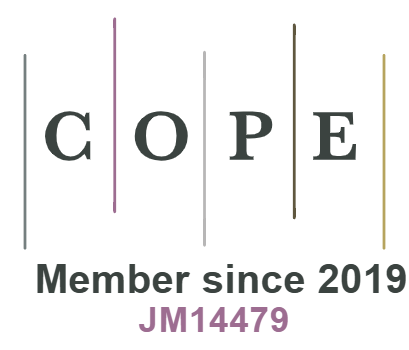Gender and perception of the middle age
DOI:
https://doi.org/10.18778/0208-600X.59.06Keywords:
patriarchy, gender, perception of women’s and men’s middle ageAbstract
The theoretical framework of the sociological analysis conducted for the purpose of this publication is the gender approach. Its aim was to find signs of the influence of the patriarchal culture on perceptions of middle age in relation to own category of gender of respondents and to show what this influence is.
It is hypothesized that differences in the perception of the middle phase of life between men and women are related to the unequal status of gender in patriarchal society based on specific power relationships between categories of gender and patriarchal conceptions of femininity and masculinity. According to them a process of socialization of the young generation goes and the social expectations of women and men are formulated, including their age (gendered age). Empirically observed in many studies perceptions of middle age in terms of the crisis, especially by men, would be in their case associated with the expected by them risk of possibility of loss their subjective social and the ideal of masculinity. The positive image of this phase of life would be associated with a sense of self-realization and / or fulfillment of expectations regarding the male role in society. In the patriarchal social order perceived threat of loss of real subjective status does not apply, for obvious reasons, to objectified women. Their perception of middle age can, however, be associated with a sense of advancement of the process of women’s empowerment and / or the degree of satisfaction with the realization of the patriarchal ideal of femininity.
References
Adler A. (1948), Znajomość człowieka, S. Jemiołkowski, T. J. Evert, Łódź.
Google Scholar
Beall A. L. (2002), Społeczno-konstruktywistyczne podejście do rodzaju, [w:] B. Wojciszke (red.), Kobiety i mężczyźni: odmienne spojrzenie na różnice, GWP, Gdańsk.
Google Scholar
Brannon L. (2002), Psychologia rodzaju, GWP, Gdańsk.
Google Scholar
Castelain-Meunier Ch. (1986), Émancipation et mouvements culturels, raport z badań, maszynopis, EHESS-CADIS, Paris.
Google Scholar
Chmura-Rutkowska I., Ostrouch J. (2007), Mężczyźni na przełęczy życia, Studium socjopedagogiczne, Oficyna Wydawnicza Impuls, Kraków.
Google Scholar
CBOS (2012), Komunikat z badań: Polacy wobec własnej starości.
Google Scholar
Dubet F. (1994), Sociologie de l’expérience, Seuil, Paris.
Google Scholar
Friedan B. (1993), The Fountain of Age, Simon, Schuster, New York.
Google Scholar
Friedan B. (2012) [1963], Mistyka kobiecości, Wydawnictwo Czarna Owca, Warszawa.
Google Scholar
Guionnet Ch., Neveu E. (2004), Féminins/masculins. Sociologie du genre, Armand Colin, Paris.
Google Scholar
Hearn J. (2008), Patriarchaty, transpatriarchaty i punkty krzyżowania się kategorii społecznych, tłum. M. Habura, [w:] E.H. Oleksy (red.), Tożsamość i obywatelstwo w społeczeństwie wielokulturowym, Wydawnictwo Naukowe PWN, Warszawa.
Google Scholar
Humm M. (1993), Słownik teorii feminizmu, Semper, Warszawa
Google Scholar
Kaschack E. (1996), Nowa psychologia kobiety, GWP, Gdańsk.
Google Scholar
Kimmel M. (2004), The Gendered Society, Oxford University Press, New York.
Google Scholar
Mandal E. (2003), Kobiecość i męskość. Popularne opinie a badania naukowe, Wydawnictwo Naukowe „Żak”, Warszawa.
Google Scholar
Malinowska E. (2000), Feminizm europejski, demokracja parytetowa a polski ruch kobiet. Socjologiczna analiza walki o równouprawnienie płci, Wydawnictwo Uniwersytetu Łódzkiego, Łódź.
Google Scholar
Malinowska E. (2011), Kapitał ludzki w ujęciu genderowym – koncepcja teoretyczna, „Acta Universitatis Lodziensis. Folia Sociologica”, nr 39, s. 3‒16.
Google Scholar
Malinowska E. (2012), The androgynization of the “city of women” and its region, „Acta Universitatis Lodziensis. Folia Sociologica”, nr 43, s. 125‒136.
Google Scholar
DOI: https://doi.org/10.18778/0208-600X.43.08
Malinowska E. (2016), Badanie postaw wobec zdrowia i wyglądu z perspektywy kulturowych definicji płci i wieku oraz upłciowionego wieku. Koncepcje i ustalenie teoretyczne, [w:] E. Malinowska, K. Dzwonkowska-Godulai in., Kulturowe uwarunkowania postaw kobiet i mężczyzn w różnym wieku wobec swego wyglądu i zdrowia, Wydawnictwo Uniwersytetu Łódzkiego, Łódź, w druku.
Google Scholar
Malinowski B. (1980), Dzieła, t. 2, PWN, Warszawa.
Google Scholar
Mauss M. (1969) [1931], La cohésion sociale dans les sociétés polysegmentaires, [w:] M. Mauss, Oeuvres, t. 3: Cohésion sociale et division de la sociologie, Minuit, Paris.
Google Scholar
Mead M. (1935), Sex and Temperament in Three Primitives Societes, Dell Publishing, New York.
Google Scholar
Melosik Z. (2006), Kryzys męskości w kulturze współczesnej, Oficyna Wydawnicza „Impuls”, Kraków.
Google Scholar
Moore H. L. (2005), Płeć kulturowa i status – wyjaśnienie sytuacji kobiet, [w:] M. Kempny, E. Nowicka (red.), Badanie kultury. Elementy teorii antropologicznej, Wydawnictwo Naukowe PWN, Warszawa.
Google Scholar
Oleś P. K. (2000), Psychologia przełomu połowy życia, Towarzystwo Naukowe KUL, Lublin.
Google Scholar
Pankowska D. (2005), Wychowanie a role płciowe, GWP, Gdańsk.
Google Scholar
Renzetti C. M., Curran D. J. (2005), Kobiety, mężczyźni i społeczeństwo, Wydawnictwo Naukowe PWN, Warszawa.
Google Scholar
Sztompka P. (2002), Socjologia, Wydawnictwo Znak, Kraków.
Google Scholar
Tajfel H. (1972), La catégorisation sociale, Larousse, Paris.
Google Scholar
Tajfel H., Turner J. C. (1979), An integrative theory of intergroup conflict, [w:] W.G. Austin, S. Worchel (eds.), The social psychology of intergroup relations, Brooks/Cole, Monterey.
Google Scholar
Tong R. P. (2002), Myśl feministyczna. Wprowadzenie, Wydawnictwo Naukowe PWN, Warszawa.
Google Scholar
Unger R., Saundra C. (2002), Seksizm: pespektywa zintegrowana, [w:] B. Wojciszke (red.), Kobiety i mężczyźni: odmienne spojrzenia na różnice, GWP, Gdańsk.
Google Scholar
Wojciszke B. (2003), Człowiek wśród ludzi. Zarys psychologii społecznej, Wydawnictwo Naukowe Scholar, Warszawa.
Google Scholar
Woolf V. (1997) [1929], Własny pokój, Wydawnictwo Sic!, Warszawa.
Google Scholar
Downloads
Published
How to Cite
Issue
Section
License

This work is licensed under a Creative Commons Attribution-NonCommercial-NoDerivatives 4.0 International License.










